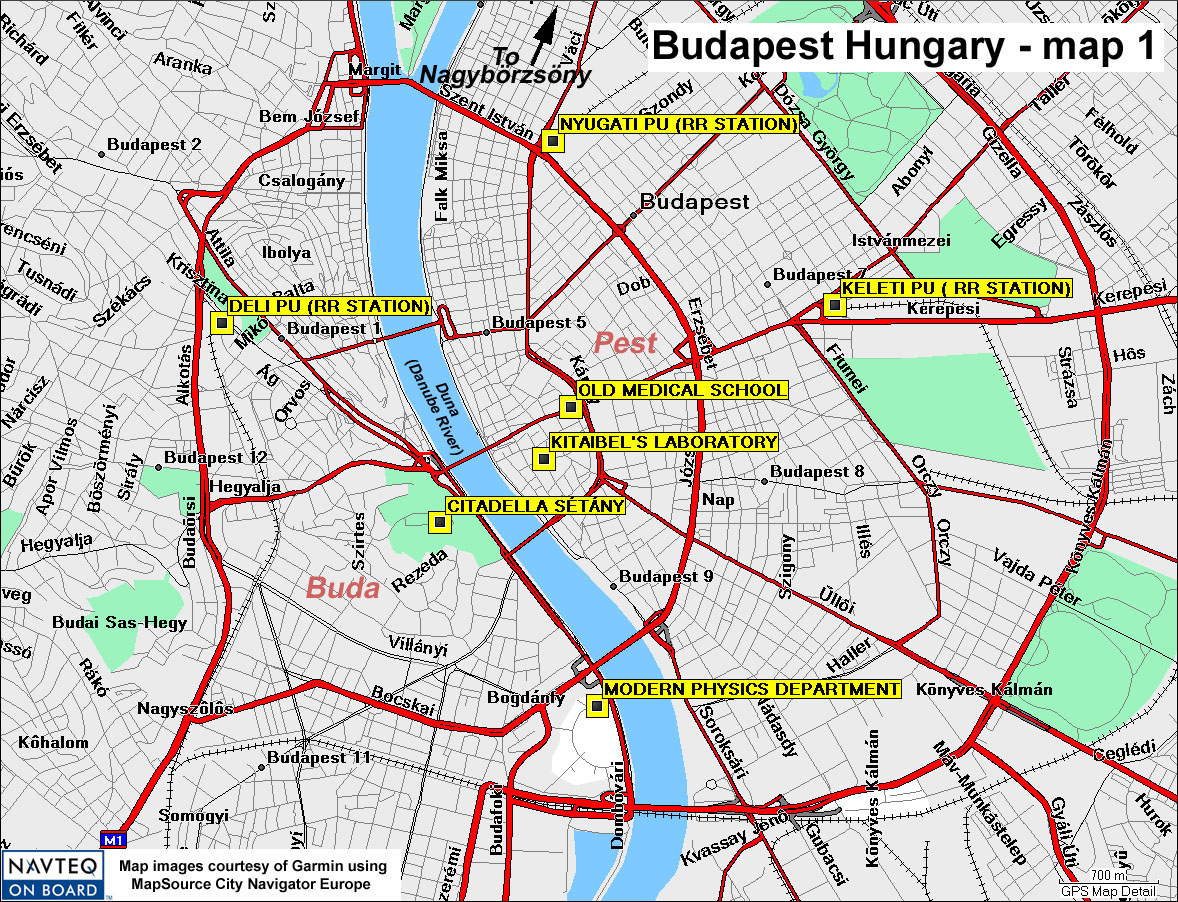
Directions:
Budapest was the city where Kitaibel Pál independently
discovered tellurium (after Müller von Reichenstein).
NOTE: Utca = "street," Tér = "square," Körút
= "boulevard."
The three train stations which Budapest uses are:
(1) Keleti Pályaudvar (east station), abbreviated Keleti Pu, Baross Tér,
downtown Pest, RR station built in 1884, serves Bucharest, Warsaw, Sophia, sometimes
some western countries - N47 30.04 E19 05.02.
(2) Nyugati Pályaudvar (west station), abbreviated Nyugati Pu, Nyugati
Tér, downtown Pest, RR station built in 1877, serves Prague, Berlin,
and other eastern destinations - N47 30.66 E19 03.43.
(3) Deli Pályaudvar (south station), abbreviated Deli Pu, 55 Krisztina
körút, downtown Buda, RR station built in 1977, serves Yugoslavia
and Austria.- N47 29.97 E19 01.57.
The road to Nagybörzsöny is at the top of the map, proceeding northward along Váci Út ("road to Vác"), which develops into Highway 2 in the northern suburbs of Budapest.
In Buda (west side of Danube):
Institute of Physics, Eötvös University, Péter sétány
1/A, where Endre Rátkay's fresco is displayed (in the "Harmony Room"),
with scientists depicted including not only Kitaibel Pál (note the typical
last name first in Hungarian names), but also Democritus, Aristotle, Pythagorus,
Ptolemy, Giordano Bruno, Nicolaus Copernicus, Tycho Brahe, János and
Farkas Bolyai, Roland von Kepler, Galilei, Pázmány, Newton Eötvös,
Ányos Jedlik Miksa Hell, Albert Einstein, Max Planck, Max von Laue, James
D. Watson, Marie Curie, Erwin Schrödinger, Werner Heisenberg, and Niels
Bohr - N47 28.51 E19 03.69.
Citadella Sétány, on Gellért Hill (Gellért-hegy),
the imposing citadel on the mountain overlooking the Danube River - N47 29.20
E19 02.77.
In Pest (east side of Danube):
Site of old medical school, Semmelweis utca 1; Kitaibel was associated with
this school - N47 29.65 E19 03.53.
Kitaibel's laboratory/house, where he discovered tellurium, Reáltanoda
utca, between Szép utca and Ferenciek tere, N47 29.56 E19 03.45.
